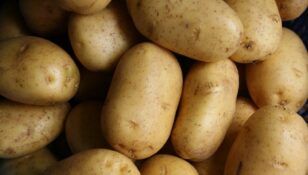Keto Dessert: A Comprehensive Guide to Low-Carb Sweet Treats

[ Introduction]
In recent years, the ketogenic diet, also known as the keto diet, has gained immense popularity for its potential health benefits and weight loss effects. With its focus on low-carb, high-fat foods, the keto diet restricts the consumption of traditional desserts that are loaded with sugar and carbs. However, this doesn’t mean that dessert enthusiasts need to give up on indulging their sweet cravings completely. Enter ”keto dessert,” a growing trend that offers a variety of delicious, low-carb alternatives. In this article, we will provide a thorough overview of keto desserts, exploring what they are, the different types available, their popularity, and how they differ from each other.
[ Understanding Keto Desserts]

The primary principle behind keto desserts is to replace high-carbohydrate ingredients with low-carb alternatives while still maintaining a delectable taste. This ensures that these desserts are compatible with the macronutrient ratios required by the ketogenic diet. Common ingredients used in keto desserts include almond flour, coconut flour, erythritol or stevia as sweeteners, and healthy fats like coconut oil or avocado. By using these substitutions, keto desserts offer a guilt-free way to satisfy a sweet tooth while staying in ketosis.
[ Types of Keto Desserts]
Keto desserts come in a wide range of options, allowing for creativity and versatility in the kitchen. Some popular types of keto desserts include:
1. Mug Cakes: These single-serving cakes can be quickly prepared in a mug and are ideal for a quick and easy keto-friendly dessert fix.
2. Fat Bombs: These high-fat treats are packed with energy and flavor. They often feature ingredients like coconut oil, nut butter, and cocoa powder, providing a satisfying and sweet indulgence.
3. Cheesecakes: Keto-friendly cheesecakes are usually made with almond flour crusts and are sweetened with alternative sweeteners. They offer a creamy and decadent dessert option that is low in carbohydrates.
4. Panna Cotta: This Italian dessert can be easily adapted to fit the keto diet by using alternatives to traditional sugar and cream.
[ Popularity of Keto Desserts]
As the popularity of the ketogenic diet continues to soar, the demand for keto desserts has also grown. Many individuals are seeking alternatives to satisfy their sweet cravings without jeopardizing their progress on the keto diet. The rise of social media platforms, such as Instagram and Pinterest, has played a significant role in popularizing keto desserts. Food bloggers, influencers, and even celebrities share their mouthwatering creations, showcasing the delicious possibilities of this low-carb dessert trend.
[ Quantitative Measurements of Keto Desserts]
When it comes to the nutritional aspects of keto desserts, it’s essential to understand their impact on the ketogenic diet. While each recipe varies in terms of macros and calories, it’s crucial to consider their carbohydrate, fat, and protein content. By maintaining the recommended macronutrient ratio (typically around 70% fat, 20% protein, and 10% carbohydrates), keto dieters can incorporate these desserts into their meal plans without sabotaging their progress.
[ Differences Among Keto Desserts]
Although keto desserts share the common goal of low-carb indulgence, they can differ significantly in taste, texture, and ingredients. Some desserts may rely more heavily on almond flour or coconut flour, leading to variations in consistency. Sweeteners, such as erythritol or stevia, can also affect the taste, with some people preferring one over the other. These differences among keto desserts provide options for individuals with specific preferences or dietary restrictions, ensuring there is something for everyone.
[ Historical Overview of Pros and Cons of Keto Desserts]
While keto desserts are relatively new to the culinary scene, they have quickly gained attention for their potential benefits. On the positive side, keto desserts offer a guilt-free way to enjoy something sweet while adhering to a low-carb lifestyle. Additionally, they can provide a sense of satisfaction and help individuals stick to their ketogenic diet long-term. However, critics argue that reliance on sweeteners and substitutes may perpetuate a dependence on sweets and hinder the development of healthier eating habits.
In conclusion, keto desserts have emerged as a delicious solution for those following a low-carb, high-fat diet. By satisfying sweet cravings while maintaining ketosis, these desserts offer a guilt-free indulgence for individuals on the ketogenic journey. From mug cakes to cheesecakes, the variety of options allows for endless creativity in the kitchen. As the popularity of the ketogenic lifestyle continues to grow, so does the demand for satisfying and flavorful keto desserts. So why not give them a try and discover a world of low-carb sweetness?

















